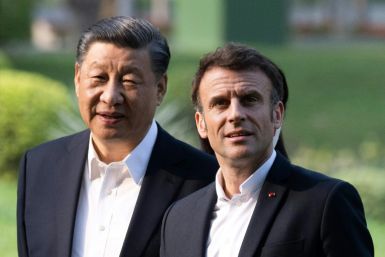Gold: 2012 Could See Price Rise, But Is Peak Ahead?
Could the gold boom of the past 10 years be about to peak?
Certainly many surveys are warning investors that gold prices could trade around current levels for the first half of the year before rebounding in the second six months as world economic conditions improve.
Gold futures hit a five week high midweek, as investors generally became happier with risk.
That was after gold prices rose 10% over 2011, after being up more sharply by August - September when they eased noticeably.
Comex February gold futures rose $US3.40 an ounce to $US1,659.90 an ounce, the highest close since December 13, just before AirWeekly ended for 2011.
Since then prices have meandered, but demand for the metal seems to have strengthened in the New Year as signs the euro crisis has eased a little.
But while many forecasters still see a possibility of gold touching $US2,000 an ounce this year, the forecasts are not as strong as they were in the back half of 2011.
Leading consultancy Thomson Reuters GFMS said this week in its first report this year on the metal that gold prices may struggle in the short term, particularly once Lunar New Year demand subsides in Asia.
And, although not quite at the end just yet, Thomson Reuters GFMS is of the view that gold's decade-long bull run is beginning to near its close.
The firm says once the global macroeconomic picture improves, which it expects could happen in 2013, there is a strong possibility that this will lead to a drop in investment demand for the metal and "a secular retreat in the price will unfurl".
GFMS says it still expects 2012 will see a solid gain in prices, although it does see prices trading fairly weakly in the first half, before powering toward $2,000 in the second half of the year.
GFMS and other forecasts had seen gold prices rising towards the end of 2011, but prices weakened as the euro crisis deepened.
The reasons for these expectations are numerous and include, the consultancy says, " exceptionally low interest rates, enhanced inflation expectations, monetary policy easing and a general mistrust of fiat currencies".
Asia celebrates the Lunar New Year starting next week. China dominates demand (and production) in the region and has become the fastest growing gold market in the world, importing record amounts in 2011 through Hong Kong.
GFMS forecasts an average price of $US1,640 an ounce for the metal in the first half of the year, which implies little change for the first six months from where prices are now.
(Morgan Stanley cut its 2012 gold price forecast by 16%, to $US1,845 an ounce this week, reflecting the belief that the US dollar will continue to strengthen.)
GFMS says the pace of gains, however, is likely to pick up "and power ahead to fresh all time highs" later in the year on exceptionally low interest rates, inflation concerns, potential for monetary policy easing, and "a general mistrust of fiat currencies".
Philip Klapwijk, Global Head of Metals Analytics at Thomson Reuters GFMS, said, "We've seen a great deal of attention on the Eurozone debt crisis, which has led some to seek out the dollar and US Treasuries as a least bad option.
"However, the re-emergence of US concerns, in particular any apparent need to adopt QE3, could really fire up the gold market.
"After all, don't forget that gold's price spike last August/September followed on from the US debt ceiling impasse and downgrade."
One of the report's key conclusions is that, having risen by 28% in 2011, prices may struggle in the short term and this explains the seemingly cautious forecast of a first half price average of $US1,640.
Klapwijk noted, "We are conscious that the Eurozone crisis is far from over and its impact on liquidity, the value of the US dollar and attitudes to risk could all become very apparent, particularly once buying linked to the Chinese new year is behind us".
However, GFMS believes that prices should shrug off any lethargy and power ahead to fresh all time highs, with Klapwijk adding, "We could even see prices just over the $2,000 mark later this year or in early 2013".
But the report does acknowledge that the gold market is nearing the closing stages of its decade-long bull run and that, once the macroeconomic backdrop changes and investment in gold fades (probably some time next year), a secular retreat in the price will unfurl.
Any rise in US interest rates would support a higher level for the US dollar, which would undermine gold prices.
But we can't discount the possibility of a political impasse in America this year, or after the November elections which could send gold prices higher.
The report's analysis of the past year also contains some important findings on why the price behaved as it did.
One key element is the resilience of jewellery demand, which only fell by 2% in 2011.
This was largely due to strong performances by India and China, thanks in the main to bullish price expectations and robust GDP growth.
Most other countries, in contrast, recorded losses, often substantial.
At the same time, global scrap fell by 2%, despite the price rise. This was in turn attributed chiefly to price acclimatisation, near market stock depletion and expectations of higher prices.
This meant that jewellery fabrication net of scrap actually rose by 2%.
Also supportive in 2011 were significant net purchases by the official sector, which are estimated to have jumped to 430 tonnes.
This was largely due to ongoing trivial sales by signatories to the Central Bank Gold Agreement and a marked rise in purchases by countries outside this group, chiefly due to a desire to diversify reserves away from fiat currencies. This was also significant as it encouraged private sector investment.
But a day after the GFMS report was released, a major negative for the gold price in the short to medium term emerged when India's Ministry of Finance announced increases in import duties on gold and silver "in a bid to cool demand" and relieve pressure on the country's week trade figures.
Without gold and silver imports India would run a small trade surplus.
The move could lead to lower imports, which would remove an important support for global gold prices. Until China overtook it a year ago, India was the biggest market for gold, especially jewellery.
India's jewellery demand dropped 26% in the third quarter of 2011 to 125.3 tonnes, hit by strong surge in prices earlier in the year and the sharp fall in the rupee, which has continued.
The Indian government raised the import tax on gold to 2% of its value, while that on silver has been changed to 6% of the value of import.
Analysts and traders said the government has changed the import duty to discourage imports of both gold and silver.
They added that the changes could nearly double duties on both metals.
Normally such a move in a major market like India would have seen gold prices sold off, but such has been the demand from China for jewellery and investment (and from investors in the west), that the market shrugged off what is a significant development for the gold sector.
Finally another report out this week sees many major mining companies expect world gold prices to reach rise this year.
A survey by PricewaterhouseCoopers found 80% of mining companies expect gold to peak at US$2000 per ounce in 2012.
Copyright Australasian Investment Review.
AIR publishes a weekly magazine. Subscriptions are free at www.aireview.com.au






